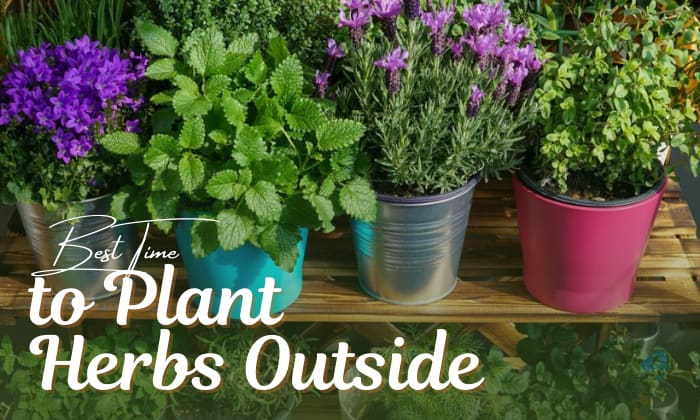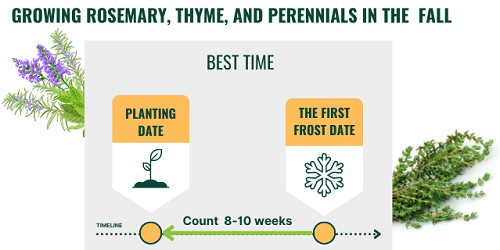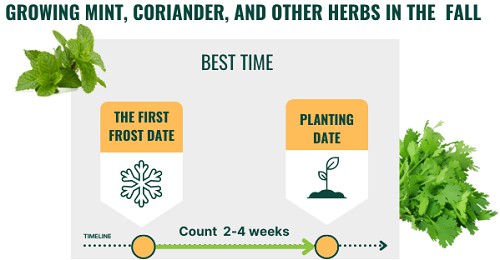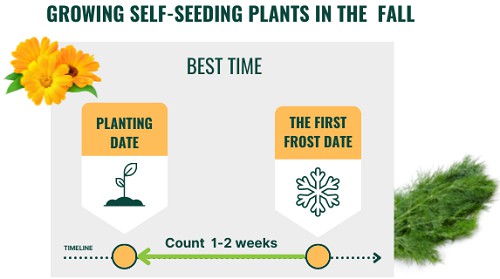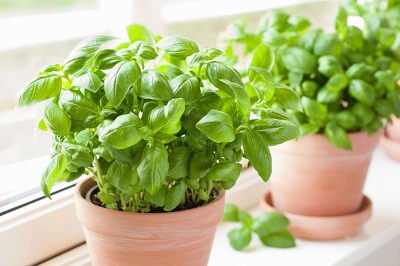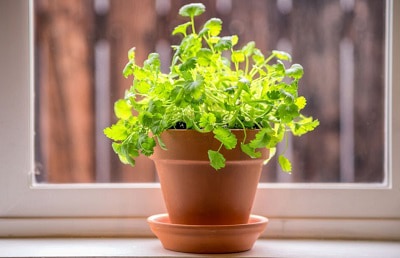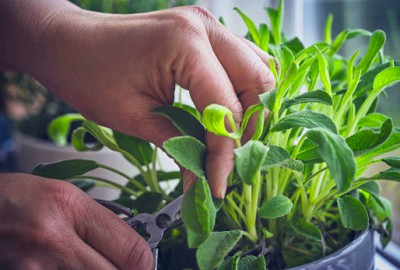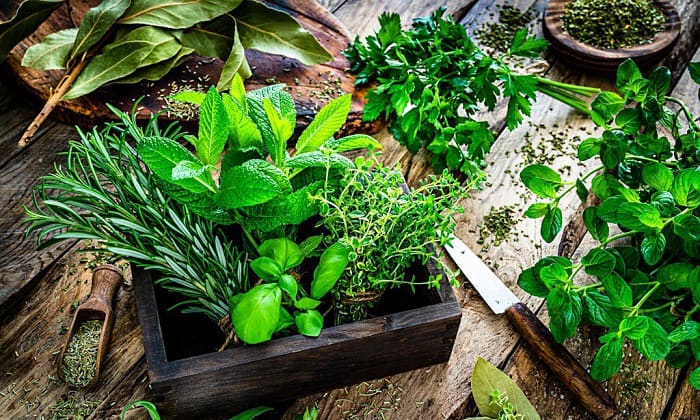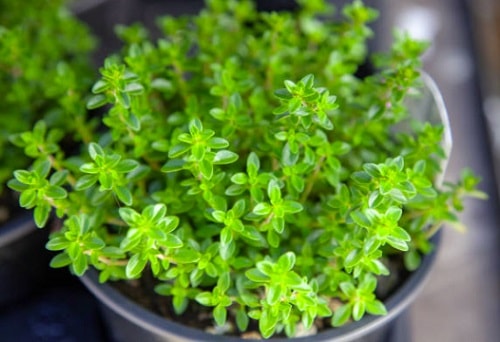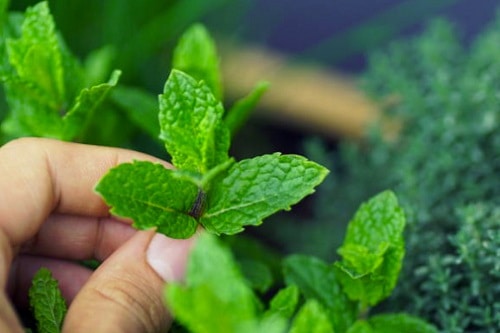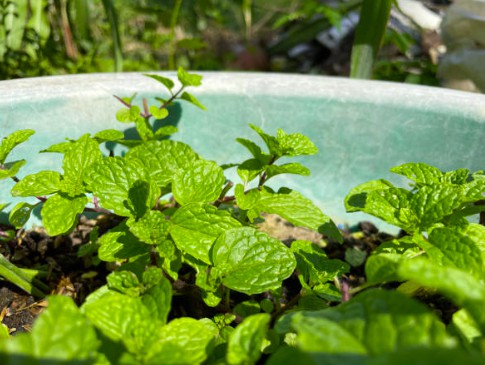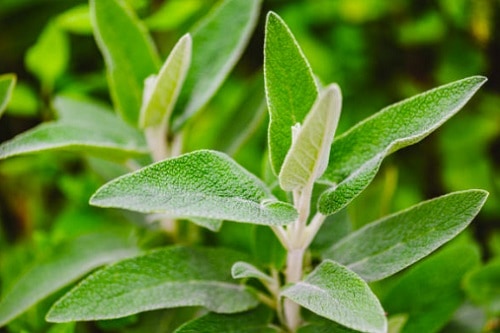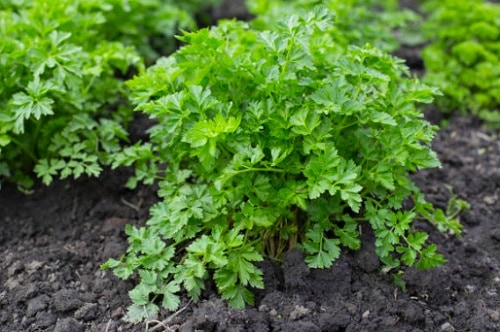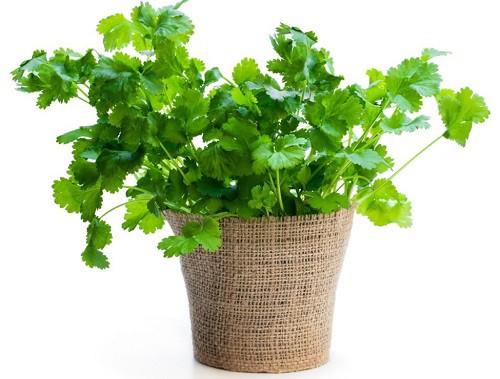Herbs are among the easiest plants to grow, making them ideal for beginners. Not only are herbs useful in the kitchen, but they are also great companion plants, and knowing when to plant herbs outside is key to a thriving garden.
The planting calendar of herbs varies depending on the kind of crop and your hardiness zone. Many, however, start germinating when soil temperatures are around 60 to 70 degrees Fahrenheit, so it is ideal to start planting in spring, from March to May, or in fall, from September to November.
Table of Contents
Best Time to Plant Herbs Outside
What month is the best time to plant herbs? The answer depends on your location and the type of herb you are planning to grow.
In general, cool-season herbs will thrive well in cooler climates, and you can grow year round herbs outdoors if you are residing in areas with mild winters. It is also recommended to monitor the dates of your spring frost to more accurately predict the best time to grow herbs.
These crops are relatively easy to care for, but for those who have zero experience in planting and want to try growing herbs, here is a planting guide for several easy herbs to grow outdoors.
| Herb | Growth Type | Planting Zone | Indoor Planting Date (weeks before last spring frost) | Outdoor Planting Date (weeks before/after last spring frost) | Soil Requirement | Light Requirement | Time to Harvest |
| Dill | Annual | Zone 2 to Zone 11 | Not recommended | 4 to 5 weeks before | Rich (6.5 to 7 pH) | Full sun (6 to 8 hours) | 28 to 56 days |
| Basil | Annual | Zone 10 and above | 6 to 8 weeks | Any time after | Rich, moist (6 to 7.5 pH) | Full sun (6 to 8 hours) | 70 to 75 days |
| Cilantro | Annual | Zones 3 to Zone 11 | Not recommended | Any time after | Light (6.5 pH) | Partial shade to full sun (6 to 8 hours) | 21 to 28 days |
| Parsley | Biennial | Zone 4 to Zone 9 | 10 to 12 weeks | 3 to 4 weeks before | Medium rich (6 to 7 pH) | Partial shade (6 to 8 hours) | 70 to 90 days |
| Rosemary | Tender perennial | Zone 6 to Zone 9 | 6 to 10 weeks | 1 to 2 weeks before | Loamy with a pH of 6 to 7 | Full sun (6 to 8 hours) | 40 to 42 days |
| Oregano | Hardy perennial | Zone 5 to Zone 10 | 6 to 10 weeks | Any time after | Fertile, pH of 6.5 to 7 | Full sun (6 hours) | 60 days |
| Thyme | Perennial | Zone 5 to Zone 9 | 6 to 10 weeks | 2 to 3 weeks before | Fertile, well-drained (6 to 8 pH) | Partial shade to full sun (up to 10) | 14 to 28 days |
| Sage | Perennial | Zone 5 to Zone 9 | 6 to 10 weeks | 1 to 2 weeks before | Well-drained (6 to 7 pH) | Full sun (6 to 8 hours) | 75 days |
| Chives | Perennial | Zones 3 to Zone 10 | 8 to 10 weeks | 3 to 4 weeks before | Rich, moist (6 to 7 pH) | Full sun | 30 days |
| Mint | Perennial | Zone 4 to Zone 9 | 6 to 10 weeks | Any time after | Rich, moist (6 to 7.5 pH) | Partial shade to full sun (2 to 8 hours) | 90 days |
- In PA and in Massachusetts, which are both in Zones 5a through 7b, you can grow sage, thyme, oregano, tarragon, winter savory, chives, and French sorrel.
- In Ohio, with hardiness zones ranging from Zone 5b to 6b, planting lavender, rosemary, thyme, and sage is recommended.
- In Georgia, under Zones 6a to 9a, herbs like thyme, marjoram, oregano, rosemary, sage and chives can grow well.
Use your province’s hardiness zone to determine which plant you can cultivate. Note that if you live in Ontario or any place outside of the US, the zones listed in the table won’t apply, since the numbering systems among countries will differ.
In Ontario, which is the most populous province in Canada, the hardiness zones span from Zone 0b to Zone 7a. It would be a great choice to grow herbs like chives, mint, and fennel here.
As for fall planting, the general guidelines are:
- Eight to ten weeks before the first frost for rosemary, thyme, and many perennials
- Two to four weeks after the first frost for mint, coriander, and other herbs that require stratification
- One to two weeks before the first frost for self-seeding plants like dill and calendula
Types of Herbs to Plant
Herbs can be annuals, biennials, or perennials, and the difference among them is as follows:
- Annuals – these plants bloom for only one growing season and then die right after. Examples of annual herbs are basil, coriander, and dill.
- Biennials – their life cycle is completed within two seasons. They flower and develop seeds in the second season, after which the plant dies. Caraway and parsley are biennials.
- Perennials – they live for many growing seasons, as long as they are properly overwintered. Sage, chives, and fennel are perennial herbs.
How to Plant?
Growing herbs outdoors is simple and beginner-friendly. However, different types of herbs have different growing requirements. Be sure to check the packaging for the specific requirements of the crops that you are planning to grow.
If you want to plant an herb garden, it would be wise to group together plants with similar demands to make caring for them a lot easier. Here are some general guidelines to take note of when you start planting herbs:
- Plant the herbs in a spot that fulfills their sun exposure requirements. Chervil and spearmint, for example, grow best in partial shade while basil and chives need full sun
- Select a well-draining soil to prevent issues with water infiltration and root rot. If you observe that your soil has drainage problems, amend it with peat and compost before planting.
- When growing from seeds, dig a shallow pit, scatter your seeds, then cover them with soil. Water them thoroughly right after.
- Allow proper spacing between the plants for good air flow and optimal growth. Crowding plants together might result in diseases and pest infestation.
- Water herbs thoroughly, but allow the topsoil to dry out in between waterings. Avoid over-watering as it may affect the herb’s flavor.
- Likewise, herbs do not require heavy fertilization, and giving them too much fertilizer can also have a negative effect on their flavor. Generally, feeding the plants every six weeks during the growing season will suffice.
Frequently Asked Questions
How cold can herbs tolerate outside?
If you are living in areas with colder temperatures, you can still start herb garden by choosing hardy herbs to grow outdoors:
- Thyme – can tolerate temperatures as low as -30 ºF
- Mint – can tolerate temperatures as low as -20 ºF
- Lemon balm – can tolerate temperatures as low as -20 ºF
- Sage – can tolerate temperatures as low as -10 ºF
- Parsley – can tolerate temperatures as low as 10 ºF
- Cilantro – can tolerate temperatures as low as 10 ºF
Can I plant herbs outside in April?
Yes, definitely! While weather in spring can be quite unpredictable, you can choose hardy herbs to plant outdoors. Among the most common herbs planted in early spring are cilantro, lemon balm, borage, dill, and basil.
Can I plant herbs all year round?
Herbs like Mexican oregano, rosemary, and sage can be grown year-round in many areas with mild winters such as those in Zone 8 or above.
Can I plant herbs in pots?
Yes! Many herbs grow well in pots, such as sage, parsley, oregano, rosemary, marjoram, basil, thyme, chives, and mint. One key factor to consider when choosing herbs to plant is their ability to grow and spread, especially if you have limited space.
To keep the plants from spreading too much, you can try to pinch them. Apart from solving space issues, planting in pots also makes it easier to move herbs indoors in the winter season.
Can I plant herbs in August?
Yes. If you are living in Zones 3 to 5, August is a good time to plant annual herbs that are quick to mature like basil and chives, so you can harvest before the first fall frost arrives.
Meanwhile, those located in Zones 6 to 8 can grow oregano, dill, rosemary, lavender, and thyme.
As for zone 9 and higher, August planting is also feasible, as long as you pick heat-resistant crops like lemongrass and ginger.
Conclusion
Herbs are versatile plants that offer a lot of benefits when grown. They are mainly used as flavorings, but some also have medicinal properties. They are also great as companion plants and can beautify your garden even more.
When planning to grow them, it is important to know when to plant herbs outside to ensure that they will thrive in your garden.
Read more other tips to know the best time to plant Broad Beans, Turnip Greens, Alfalfa,…

Hi, I am William – Floridayards’ digital content creator. My job is to find answers to all your concerns with thorough research and our team’s expert advice. I will also bring you honest reviews on the best products and equipment for raising your beautiful garden. Please look forward to our work!


